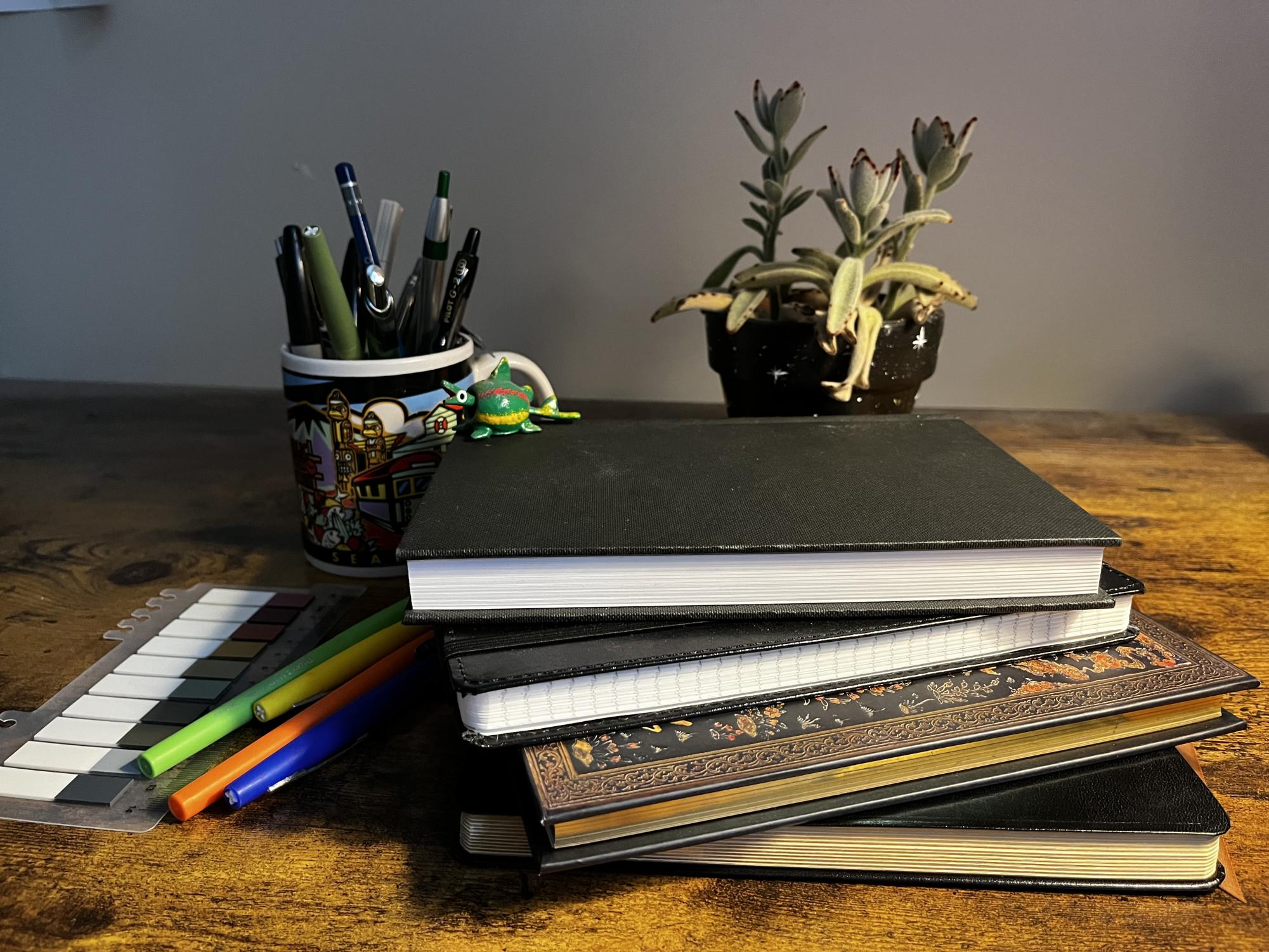Journaling is good for you. That’s what the therapist says, that’s what your friends say when you’ve bothered them long enough, and that’s what every blog on self-improvement will tell you. It is good for you if you do it consistently, but the idea of journaling is often stronger than the will of journaling– and it’s pretty hard to stay motivated if you don’t even know what to write.
Here’s some unconventional advice to help you get the most out of journaling, and how to stay consistent:
Don’t buy a journal you like
If you spend $20 on a moleskin journal with gold-gilded pages from Barnes and Noble, you’re more likely to feel like every single thing you put into it has to be polished and perfect to reflect the integrity of the cover’s lavishness. Buy something plain and cheap. If you’re proud of the contents of your journal by the time you finish it, that’s the time to decorate the outside with stickers or drawings to personalize it. Until then, it’s a work in progress. A journal is not a piece of art, it’s not on display. It doesn’t have to be aesthetically pleasing, especially if your main purpose for journaling is to declutter your mind.
You don’t even have to write in sentences
Now that you have a journal, what do you do with it? It depends on what your goals are. Regardless of the purpose of your journal, it’s good to write your name and the date on the first page so that your future self knows where in time this relic is. Once you got your author introduction page down, it’s time to decide which kind of journal you’re going to keep.
- The Live-In Therapist Journal
The most basic form of journaling is designed for if you’re knee-deep in existential dread, academic stress, or enduring crippling interpersonal relationships. If this sounds like you, consider using the journal to just write down your thoughts. These don’t have to be long-winded paragraphs; sometimes it can be helpful to make bullet-pointed lists of everything that’s going on: all of the friends you need to dump, basic necessities you’ve been putting off buying, or even just things that you like to do that you haven’t done in a while because you’re so deep in existential dread and academic stress you forgot you once had hobbies. Alternatively, if your day was filled with unrequited love, devastating humiliation, poetic damnation, or substance abuse, here’s the place to complain about it. Or, you can be epistolic by writing letters to yourself, other people, the moon– if you want. Be as dramatic as you can, this is your college lined notebook of soliloquies.
2. The Artist’s Journal
If you’re feeling a little less depressed, you can make lists or mood boards to document who you are at the moment. List your favorite movies, books you want to read this year, things you want to stop doing to make your life better, recipes, etc. These lists can be decorated with stickers, little drawings, pictures, collages, movie tickets, stamps, fortune cookie fortunes, or any other flat thing you can tape inside. This kind of journal is less for “in-the-moment crises” and more for keeping track of your personality, growth, and development over the period you’re keeping the journal.
3. The Personal Assistant Journal
The third category of journaling is most suitable for Type A personalities: the bullet journal, which is basically used to organize your life. These can be used to keep track of your mood, workout schedule, meal prep, and your daily, weekly, and monthly assignments. Each thing you’re keeping track of is put on its own separate page and called a spread. Each spread can have its own fun theme, or it can be minimal. The best part: you don’t have to actually write anything– you can color code to differentiate between units. For example, making a calendar and coloring in that day’s emotion with orange which according to your key means “ecstatic and overjoyed to be at college!” (sarcastic or not) means that from day-to-day, you don’t have to even make a sentence. Compartmentalizing these aspects of your life and finding trends within them can be both satisfying and informative.
Don’t give the journal your full attention
Don’t begin to fathom how many trees have been cut down in the name of empty journals with two pages written in them. The point of journaling isn’t just the product of it, it’s the act of actually doing it. Whether or not you’re writing, logging, or artistically expressing yourself, the journal will remain stiff and sad if you don’t stuff it with your life and soul. The key to doing this? Habit stacking. Just like everything else, it’s a lot easier to form a habit if you pair it with something else that you’re already used to doing consistently. You don’t have to journal every day when you brush your teeth, but making an intentional effort to make an event out of it, like journaling every time you return from your weekly long walk, can help you remember to do it and even be excited about it by making positive associations.
Final Regards
The act of documenting your life is equally as important as the documentation itself. Journaling doesn’t have to be meditative or restoring, and yes, it doesn’t even have to be good for you. However, what makes up your life is what you’re giving attention to, and there are a lot of abstract concepts, half-baked ideas, and ignored emotion in your brain that will otherwise rot holes into your cerebral cortex like Swiss cheese if you don’t pull them out and give them a place to run.





